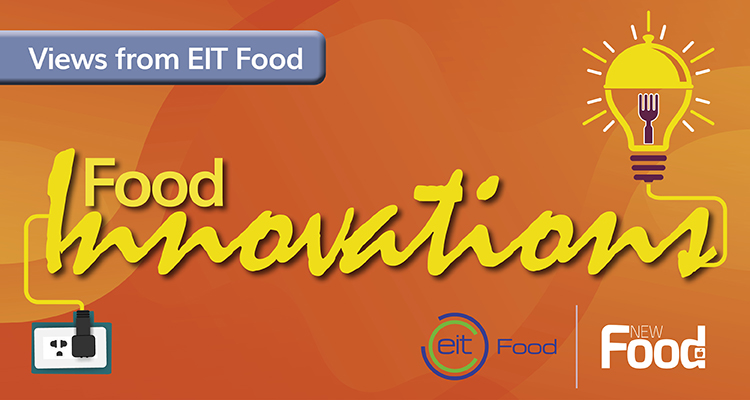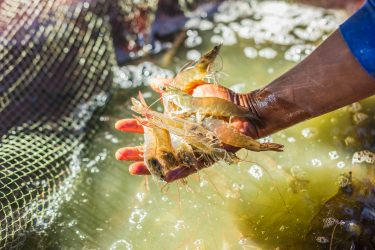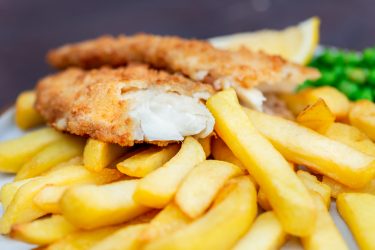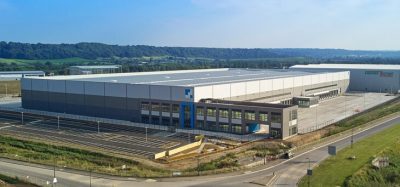The importance of sustainable aquaculture innovation for building a future-fit food system
- Like
- Digg
- Del
- Tumblr
- VKontakte
- Buffer
- Love This
- Odnoklassniki
- Meneame
- Blogger
- Amazon
- Yahoo Mail
- Gmail
- AOL
- Newsvine
- HackerNews
- Evernote
- MySpace
- Mail.ru
- Viadeo
- Line
- Comments
- Yummly
- SMS
- Viber
- Telegram
- Subscribe
- Skype
- Facebook Messenger
- Kakao
- LiveJournal
- Yammer
- Edgar
- Fintel
- Mix
- Instapaper
- Copy Link
Posted: 18 July 2022 | Dr. Andy Zynga | 1 comment
As the demand for seafood foods rises, the need for sustainable practices becomes ever-more pressing. In the first of a new series, EIT Food’s CEO Dr Andy Zynga, emphases the urgent call for sustainable aquaculture – and what exactly that entails.


Demand for seafood, aquatic plants and animals, and marine species is growing at an extraordinary rate, putting pressure on the food industry to keep up in a sustainable way. The average consumption per capita of seafood, for example, has grown from 9kg per year in 1961 to over 20kg per year by 2019.1 This has resulted in approximately two-thirds of the world’s fish stocks being either fished at their limit, or overfished and in a state of crisis.2 Unsustainable activities like these can trigger huge disruptions to ecosystems and habitats, and cause devastating ocean pollution and harmful eutrophication in coastal and inland waters.
The Earth’s water systems are all connected, therefore what we do in one place can have a direct impact on the ecosystem in another place. Our oceans and waterways are at risk, and in order to ensure everyone can continue to consume food from aquatic environments, we need to practice responsible and sustainable aquaculture.
Aquaculture is the controlled farming of aquatic animals and plants such as fish, shellfish, seaweed and algae in water environments, and it is the fastest growing food production sector in the world.3 Because of this, it faces both challenges and opportunities. The growth of the sector has the potential to tackle food insecurity for an increasing global population, but aquaculture must meet several criteria in order to be practiced sustainably.


This means that companies must act socially responsible in order to support a wide range of people and their livelihoods at both large corporate and smaller scales, but it’s also worth noting it’s a viable business opportunity.
Produce from aquaculture must also be beneficial for human health and wellbeing and managed in a way that does not create significant disruption to ecosystems. This includes maintaining healthy environments and high welfare standards for the species involved, using sustainable feed and ensuring aquaculture forms part of the wider circular economy.
Innovation in sustainable aquaculture
As I mentioned on New Food’s podcast (episode coming out latest this month – July 2022) Food to Go, it is an exciting time to be supporting innovation in the aquaculture space. Since 2018, global aquaculture production has increased by 228 percent and the value of the sector has grown by 492 percent since 1995.4 This growth has seen a huge increase in opportunities for aquaculture to help tackle major challenges such as food insecurity, climate change and health inequalities, and with this, an increase in aquaculture innovation.
Finding sustainable fish feeds
One of the major challenges faced by the aquaculture sector is the need for sustainable feed. Currently, many commercial fish feeds consist of fishmeal (ground fish) and fish oil. Producing these feeds is resource intensive, with large proportion of fish currently being caught solely to produce feed. This has led to populations of smaller ‘forage fish’ such as anchovies and herring being overfished in order to provide feed for fish species which are commercially farmed. Unfortunately, this has further implications for the entire food web, since larger fish depend on forage fish for food in our seas and oceans.
This puts fishing and aquaculture at the centre of a cycle where fish are overfished for feed simply to produce more fish, and highlights the urgent need for alternative, sustainable fish feeds. Recently we have seen increased interest in the use of alternative vegetable proteins and oils which include healthy Omega-3 to replace fishmeal in feeds. The use of farmed insects as a fish feed also has great potential.


Another alternative comes from microalgae, which are becoming increasingly popular ingredients for feed thanks to their low carbon footprint, rapid growth rate, and beneficial nutritional profiles. They have a high protein content, and are rich in dietary fibres, micronutrients and bioactive compounds.5 Aliga Microalgae, a Danish based food-tech company, is developing, cultivating and producing nutritious, protein-rich and functional microalgae ingredients for aquafeed applications. One of the products they have developed for the hatchery market is Aquapaste, which is a concentrated paste consisting of nutritious Chlorella cells.
Vaxa, a food-tech business based in Iceland, is also focusing on microalgae as a sustainable fish feed. Vaxa integrates microalgae aquaculture with one of the world’s largest geothermal plants, allowing it to transform the waste outputs of the plant into sustainable resources for the microalgae production process, meaning it forms part of an important circular economy. The microalgae can then be used as a sustainable feed for fish and as a new category of protein-rich and Omega-3 products for humans, including nutritional supplements, natural colourants and proteins to enhance meat substitutes.
The future of aquaculture
The aquaculture sector will undoubtedly be faced with new challenges in the future. However, the growth of sustainable aquaculture practices and innovation in this sector means consumers globally are more likely to benefit from access to healthy aquatic foods rich in protein and micronutrients. As consumption patterns change across the world, aquaculture may well play an important role in the future of our food system.
It is crucial that collectively we continue to support businesses, SMEs and entrepreneurs in this space so that innovation can meet the demands of the future. This requires all parts of the food system coming together to cocreate innovative, sustainable solutions to the huge food challenges our world is currently facing. We need all voices to be heard and for ideas to be developed by – and for – every part of the food system, so that we can all continue to produce and enjoy the food we love.
References
- fao.org/documents/card/en/c/ca9229en/
- https://wwf.panda.org/discover/knowledge_hub/endangered_species/cetaceans/threats/fishstocks/
- fao.org/3/i9540en/I9540EN.pdf
- fao.org/documents/card/en/c/ca9229en/
- fao.org/documents/card/en/c/cb5670en
About the author
Dr Andy Zynga, a member of the New Food Advisory Board, is the CEO of EIT Food, a food innovation community working to build a future-fit food system that produces healthy and sustainable food for all.
EIT Food is supported by the European Institute of Innovation and Technology (EIT), a body of the European Union. Based in Leuven, Andy has international experience in food systems, innovation, telecoms and technology services, and a proven track record in building profitable businesses in the US and Europe.










Geachte,
Graag had ik contact opgenomen met Andy Zynga.
Kan hij me contacteren aub ?
Bedankt
Vriendelijke groeten,